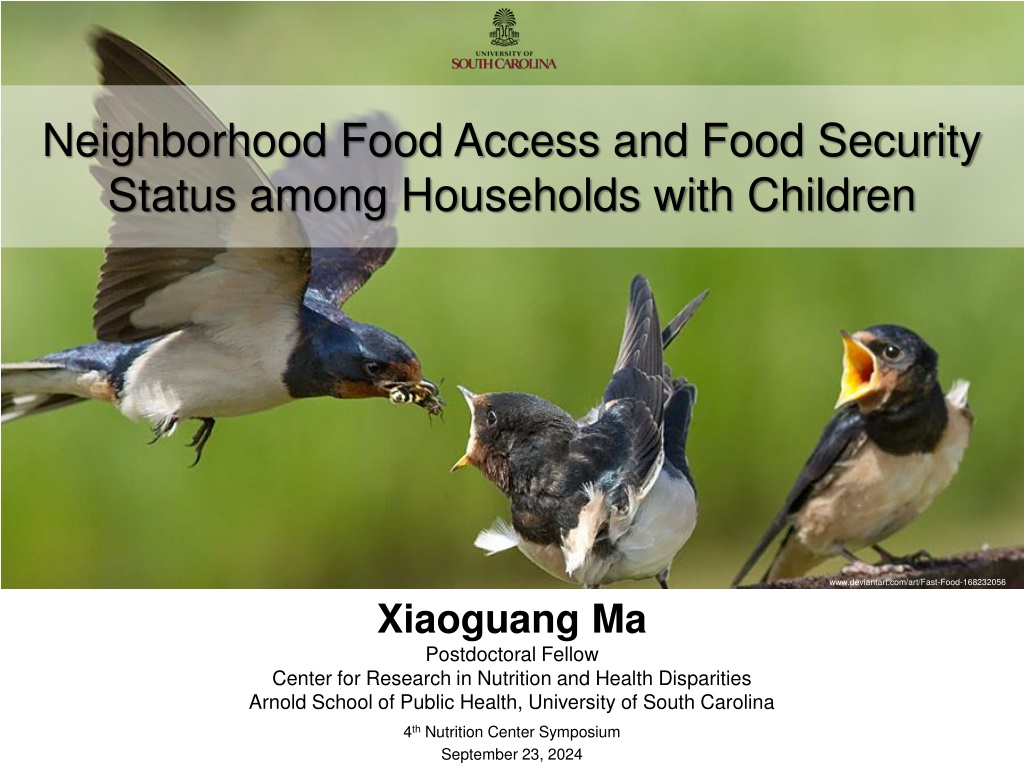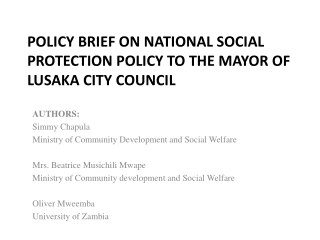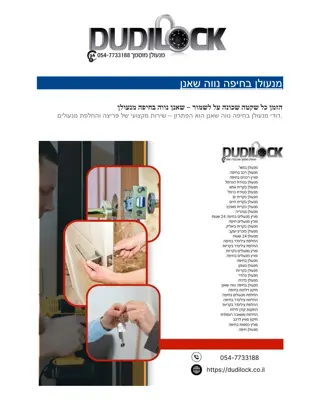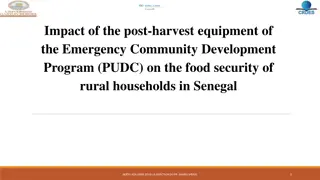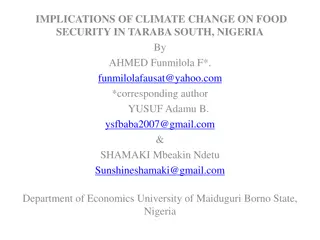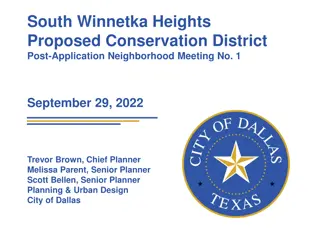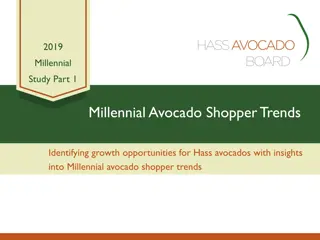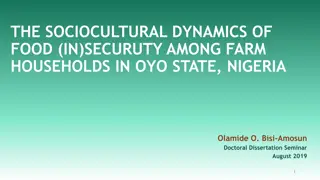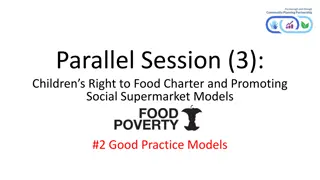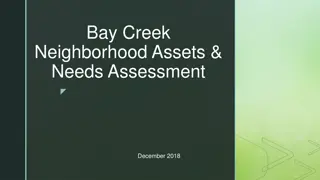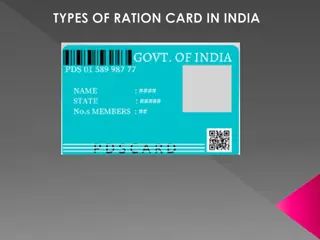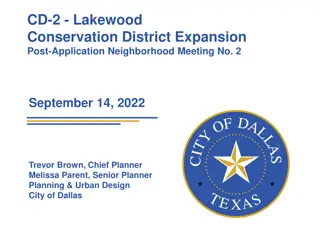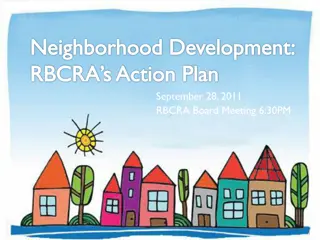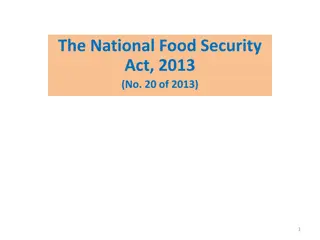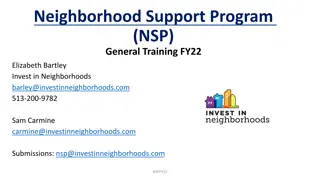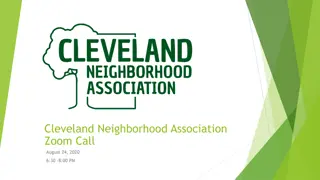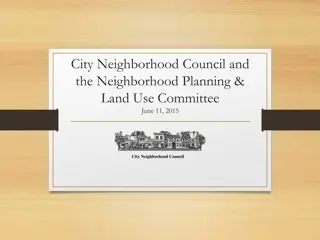Exploring Neighborhood Food Access and Food Security Among Households with Children
This study delves into the correlation between perceptions of neighborhood food access and food security status among households with children. The research, conducted in the Midlands of South Carolina, aims to uncover associations between geographic access to food stores and food security status. By analyzing data from 544 households with children, the study sheds light on the impact of neighborhood food access on dietary intake, nutrition status, and health outcomes, including obesity.
Download Presentation

Please find below an Image/Link to download the presentation.
The content on the website is provided AS IS for your information and personal use only. It may not be sold, licensed, or shared on other websites without obtaining consent from the author. Download presentation by click this link. If you encounter any issues during the download, it is possible that the publisher has removed the file from their server.
E N D
Presentation Transcript
Neighborhood Food Access and Food Security Status among Households with Children www.deviantart.com/art/Fast-Food-168232056 Xiaoguang Ma Postdoctoral Fellow Center for Research in Nutrition and Health Disparities Arnold School of Public Health, University of South Carolina 4th Nutrition Center Symposium September 23, 2024
Introduction Food security status of US children: Food insecure households with children: 20.0% Very low food secure households with children: 1.2% Neighborhood food access relates to: Dietary intake, e.g. fruit and vegetable intake Nutrition status Health outcomes, e.g. obesity Few studies have examined neighborhood food access and food security status. Alisha Coleman-Jensen, Mark Nord, and Anita Singh. Household Food Security in the United States in 2012. USDA. Economic Research Service. Morland, K. et al. American journal of public health, 2002;92(11), 1761-1768; Moore, L. V. et al. American Journal of Epidemiology, 2008;167(8), 917-924. 2
Objectives To identify associations between perceptions of neighborhood food access and food security status among households with children To identify associations between geographic access to food stores and food security status among households with children 3
Study Population and Area The Midlands Family Study: to understand the household and community conditions associated with very low food security in children 544 households with children in Midlands of South Carolina The Midlands Family Store was supported with a grant from the University of Kentucky Center for Poverty Research through funding by the U.S. Department of Agriculture, Food and Nutrition Service, contract number AG-3198-B-10-0028. 4
Measures Food security status among children (Household Food Security Survey Module) Very low food security: 5+ affirmations of 8 children items (N=179) Food insecurity: 3+ affirmations of 18 items but not VLFS-C (N=207) Food security: 0-2 affirmations of 18 items (N=158) Perceptions of neighborhood food access (Multi-Ethnic Study of Atherosclerosis Food Access Measures) Availability of fruits and vegetables (1.strongly disagree 6.strongly agree) Quality of fruits and vegetables (1.strongly disagree 6.strongly agree) Fruits and vegetables are affordable (1.strongly disagree 6.strongly agree) Availability of low fat products (1.strongly disagree 6.strongly agree) Opportunities to purchase fast foods (1.strongly disagree 6.strongly agree) Food access is a problem (1.very serious problem 4.not really a problem) Access to food stores (Geographic Information System, GIS) Network distance to the nearest supermarket and grocery store in miles Residence within 1 mile from the nearest supermarket and grocery store Residence over 4 miles from the nearest supermarket and grocery store www.ers.usda.gov/datafiles/Food_Security_in_the_United_States/Food_Security_Survey_Modules/hh2012.pdf . Echeverria, S.E. et al. J Urban Health, 2004;81, 682-701; Mujahid, M.S. et al. Am J Epidemiol, 2007;165, 858-867. 5
Statistical Analysis GIS analysis Census 2010 geographic boundaries ArcGIS 10.0 Multinomial logistic regression models Food security group as reference group Covariates: race, urban, number of children in household, number of adults in household, homelessness, monthly mortgage/rent, monthly transportation, monthly utilities, health care expenses $2,000+, monthly household wages, CHAOS Scale, social support, negative life events, perceived stress, intrinsic religiosity Robust standard error estimate for cluster sampling data Robust standard errors were calculated in STATA 10 Census tract as the cluster variable (544 participants in 119 tracts) www2.sas.com/proceedings/sugi23/Posters/p205.pdf 6
Results - Descriptive Neighborhood Food Access Measures Food Security N=158 Food Insecurity N=207 Mean (SD) or Percentage VLFS N=179 Perceptions of neighborhood food access 4.0 0.2 4.0 0.2 4.1 0.1 4.0 0.1 4.2 0.2 3.2 0.1 3.8 0.1 3.7 0.1 3.8 0.1 3.8 0.1 4.5 0.1 3.0 0.1 3.5 3.4 3.3 3.4 4.5 0.1 2.6 0.1* 0.2 0.1 0.1* 0.1 Availability of fruit and vegetable Quality of fruit and vegetable Fruits and vegetables are affordable Availability of low fat product Opportunities to purchase fast food Food access is a problem Geographic access to supermarkets and grocery stores 2.0 2.0 29.6% 12.0% 2.3 2.4 29.3% 17.3% 1.7 1.7* 36.3% 11.7% Distance to nearest supermarket, miles Residence within 1 mile from supermarket Residence over 4 miles from supermarket Bold: difference between VLFS and food security is significant (p<0.05). *: difference between VLFS and food insecurity is significant (p<0.05). 6-strongly agree, 5-agree, 4-somewhat agree, 3-somewhat disagree, 2-disagree, 1-strongly disagree. : 4-not really a problem, 3-minor problem, 2-somewhat serious problem, 1-very serious problem. 7
Results Multinomial Models Neighborhood Food Access Measures FI vs FS VLFS vs FS Relative Risk Ratios (95% CI) Perceptions of neighborhood food access 0.95 (0.81, 1.12) 0.91 (0.77, 1.08) 0.92 (0.77, 1.08) 0.94 (0.79, 1.12) 1.17 (1.01, 1.37) 0.85 (0.66, 1.10) 0.80 (0.66, 0.96) 0.77 (0.63, 0.93) 0.66 (0.54, 0.79) 0.77 (0.64, 0.95) 1.04 (0.87, 1.24) 0.58 (0.43, 0.79) Availability of fruit and vegetable Quality of fruit and vegetable Fruits and vegetables are affordable Availability of low fat product Opportunities to purchase fast food Food access is a problem Geographic access to supermarkets and grocery stores 1.00 (0.74, 1.35) 0.83 (0.48, 1.46) 1.27 (0.59, 2.71) 0.95 (0.65, 1.40) 0.81 (0.44, 1.52) 0.97 (0.35, 2.67) Distance to nearest supermarket, miles, log Residence within 1 mile from supermarket Residence over 4 miles from supermarket Adjusted for race, urban, number of children in household, number of adults in household, homelessness, monthly mortgage/rent, monthly transportation, monthly utilities, health care expenses $2,000+, monthly household wages, CHAOS Scale, social support, negative life events, perceived stress, intrinsic religiosity 8
Conclusions Perceived access to quality, affordable fruits and vegetables is low among VLFS-C families, but the mapped data suggests that fruits and vegetables may be present in close by store. Perceived food access is a problem among VLFS-C families, but there is no difference to access the supermarkets and grocery stores. Perceived access to healthful and affordable foods may be an important factor of food security status. 9
Acknowledgement Dr. Angela Liese, Dr. Sonya Jones GIS analysis: James Hibbert The Midlands Family Study group: Bethany Bell, Christine Blake, Darcy Freedman, Jan Probst, Lauren Martini, Mike Burke, Nicholas Younginer, Erin Drucker Funding by a grant from the University of Kentucky Center for Poverty Research through funding by the U.S. Department of Agriculture, Food and Nutrition Service, contract number AG-3198-B-10-0028, and the Advanced Support Program for Integration of Research Excellence-II (ASPIRE-II) grant from the Office of the Vice President for Research at University of South Carolina. The opinions and conclusions expressed herein are solely those of the authors and should not be construed as representing the opinions or policies of the UKCPR or any agency of the Federal Government. 10
Thanks! Questions? http://www.deviantart.com/art/Two-of-a-Kind-168564870
